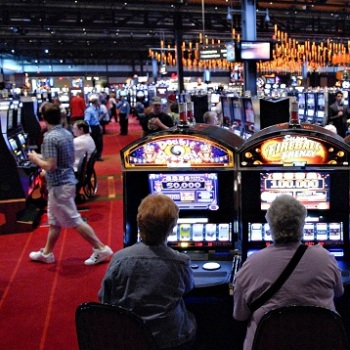Pennsylvania Casino Revenue Flat in May
June 22, 2018 11:12 am
Pennsylvania’s casino market generated $278.9 million in revenue last month, representing a modest 0.4% increase compared to the $277.7 million collected in May of 2017. From that tally, table games posted a slight 0.6% year-on-year improvement to $74.9 million, while slot machines brought in $203 million, or 0.4% more than the same month a year ago.
Market in Flux
In 2006, Pennsylvania’s racinos first started offering slots machines, with table games added to the mix a few years later following the opening of the state’s first casinos. The industry subsequently experienced exponential growth, and by 2012 the Keystone State had overtaken neighboring New Jersey as the country’s second biggest gambling market.
Highlighting the industry’s success, Pennsylvania’s 12 casinos set a new revenue record of $3.213 billion in 2016, up by 1.2% compared to the previous year, while a new all-time high was also reached in 2017 with the $3.227 billion collected higher by 2.37% year-on-year. This year, however, the market appears to be in a state of flux, as can be seen by the following results: January (-2%), February (+1.64%), March (+3.8%), April (-1.5%), and May (+0.4%).
Earnings by Casino
In May, Parx Casino lead the state’s casino market with $51.7 million in revenue, of which slot accounted for $35.7m (+4.75%) and table game the remaining $16m (+12.75%), Following close behind was Sands Casino Resort Bethlehem with $46.6m in revenue, (table: $19.6m, slots $27m), while a fair distance back in third was Rivers Casino on $29 million (table: $22.7m, slots $6.3m).
Meanwhile, Meadows Casino posted the biggest increase in table game earnings with the $3.2m collected up by a massive 124.25% from May 2017, while one the state’s smallest venues, Valley Forge Casino Resort, recorded the largest slots growth after its revenue soared by 11.6% to $7.9 million.
On the flip side, Mount Airy Casino Resort experienced the biggest year-on-year table game decrease with the $2.9m it collected in May lower by 30.49%, while Lady Luck Casino Nemacolin suffered the largest slots contraction after its revenue fell by 10.57% to $2.4 million.
Online Gambling Woes
Last year, the Keystone State voted to expand its gambling industry, with the slew of measures agreed under the bill including 12 satellite casinos being built, slots being featured at truck stops and airports across the state, as well as the legalizing and regulating of online gambling, sports betting, and daily fantasy sports.
As part of its overall package, Pennsylvania is currently offering 13 online gambling licenses covering the full range of gambling games (table games, casinos, poker) for $10 million, with application open for 90-days, after which individual game licenses in each of the categories will be available for $4 million apiece. A final round of licensing will subsequently be offered to out of state operators until August 14, providing, of course, any licenses are still free at that point.
However, initial projections that Pennsylvania’s online gambling industry would generate $200 million from licensing payments alone now seems extremely hopeful at best. After all, with the first round of licensing scheduled to end on July 16, the state has thus far received zero interest from gambling firms. As a result, the state’s budget estimate for online gambling has now been cut in half, while even applications for its recently legalized sports betting market has attracted no takers thus far.
Industry experts have since offered a number of reasons for the troubling situation. At the head of the list is the extremely high tax rate proposed for the industry, which has been set at 54% for online gambling revenue, and at 36% on sports betting revenue. In addition, operators may be reluctant to pay for an online poker license as part of the overall $10 million package, preferring to focus their efforts on individual licenses and the more lucrative online table game and casino verticals, instead.
